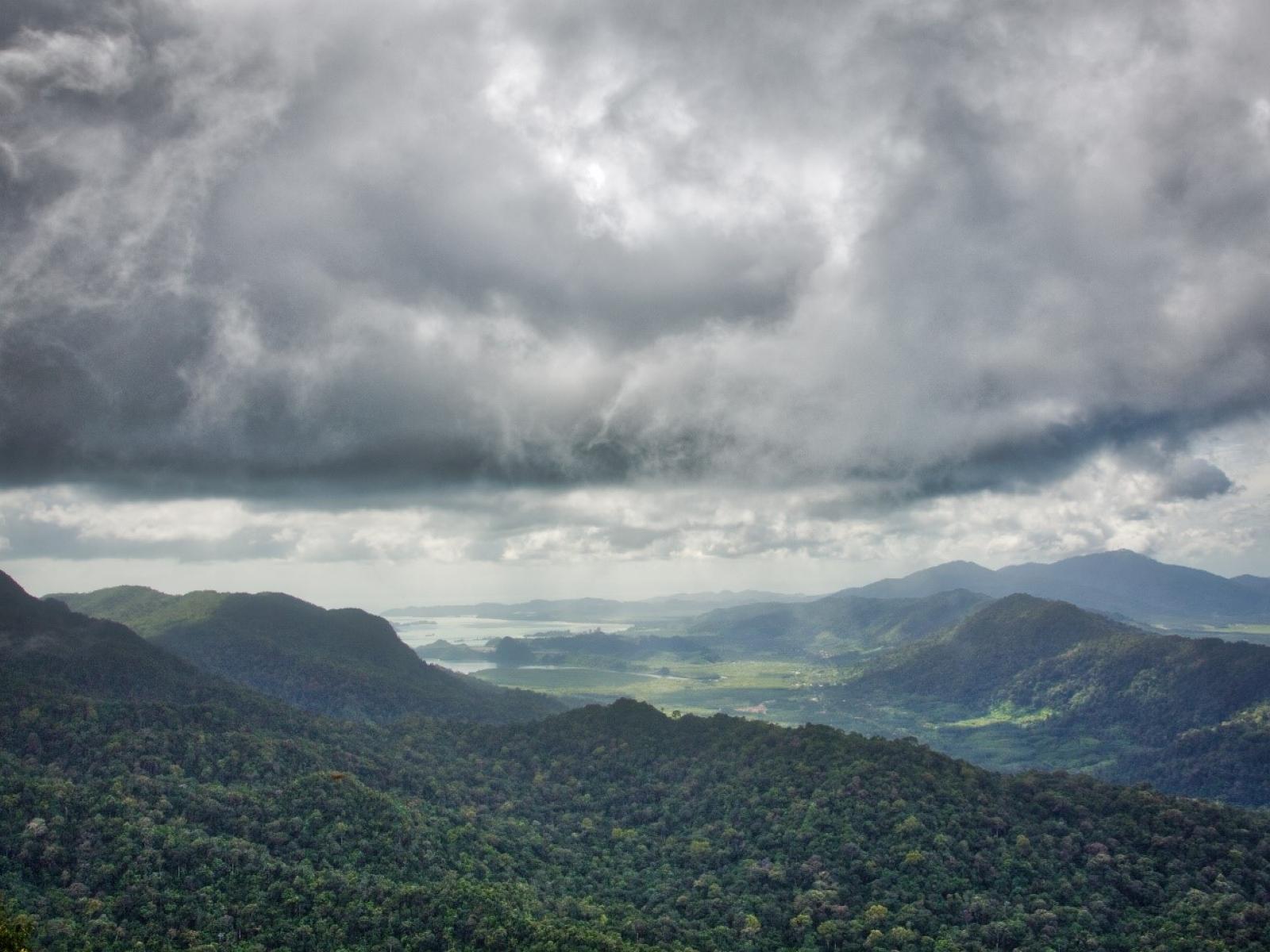How Increasing Carbon Dioxide Levels Affect Daytime Rainfall in Tropical Forests
Increasing amounts of atmospheric carbon dioxide change what time of day tropical forest rainfall occurs

Increased levels of carbon dioxide decrease the amount of rain that falls during the day relative to night in tropical rainforests.
The Science
Tropical forests are important and sensitive ecosystems that rely on large amounts of rainfall. Increasing atmospheric carbon dioxide, or CO2, changes the time of day when rain falls over tropical forests via two distinct physical mechanisms. Researchers illustrated these two pathways using the biogeochemically-enabled version of the Energy Exascale Earth System Model (E3SM). One such pathway involves the radiative response of the atmosphere to rising CO2, while the other involves plant responses to increased CO2 concentrations.
The Impact
Knowing how rainfall patterns in both space and time will respond to increasing atmospheric CO2 is important for water management. This study sheds light on how the daytime cycle of rainfall over tropical forests responds to an increase in CO2. The identified pathways reduce daytime rainfall relative to nighttime, making the distribution of rainfall more uniform across the span of a day.
Summary
Tropical rainforests receive more rainfall than almost any other land area on Earth. Understanding the sensitivity of rainfall in these regions to increasing atmospheric CO2 concentrations is important for assessing the risks to the ecosystem and the people dependent on that rainfall. Currently, these areas have a strong day-night rainfall cycle. Using the biogeochemistry-enabled E3SM, scientists found that in response to rising CO2 tropical forest rainfall becomes more uniform throughout the day. They identified two distinct physical pathways that govern this change in the rainfall timing. The first pathway starts with increased CO2 leading to increased radiative heating. This results in a relative reduction in convective instability late in the day, producing less late-day rainfall (when climatological rainfall peaks). The second pathway starts with increased CO2 leading to a reduction in evapotranspiration. This produces a warmer, drier boundary layer that leads to an increased lifting condensation level and a reduction in late-day rainfall. The physical realism of these pathways suggests these responses are likely not restricted to E3SM and could be active under higher CO2 conditions.
PNNL Contact
L. Ruby Leung, Pacific Northwest National Laboratory, Ruby.Leung@pnnl.gov
Funding
This work was supported by the Department of Energy (DOE), Office of Science, Biological and Environmental Research program (BER), Earth System Model Development program area. Part of the work was performed under the auspices of DOE by Lawrence Livermore National Laboratory. Gabriel Kooperman acknowledges support from the BER Regional and Global Model Analysis program area. The data were produced using resources of the National Energy Research Scientific Computing Center, a user facility supported by the DOE Office of Science.
Published: August 19, 2022
Harrop, B. E., Burrows, S. M., Calvin, K., Kooperman, G. J., Leung, L. R., Maltrud, M. E., et al. 2022. “Diurnal rainfall response to the physiological and radiative effects of CO2 in tropical forests in the Energy Exascale Earth System Model v1.” Journal of Geophysical Research: Atmospheres, 127, e2021JD036148. [DOI:10.1029/2021JD036148]